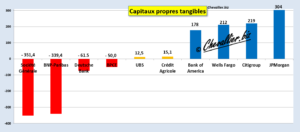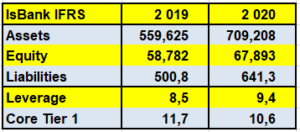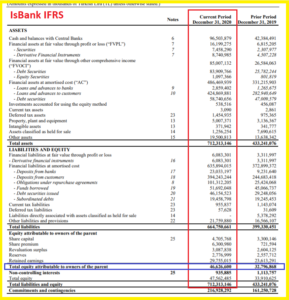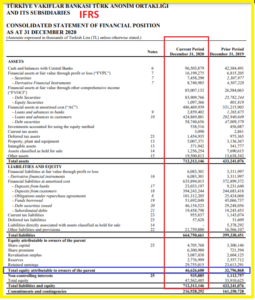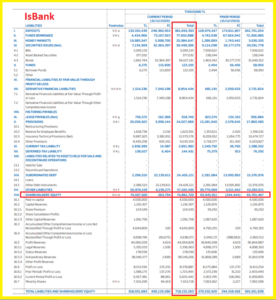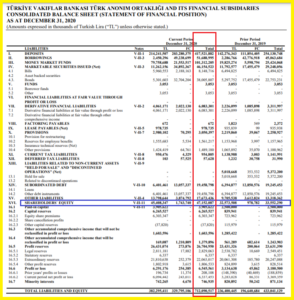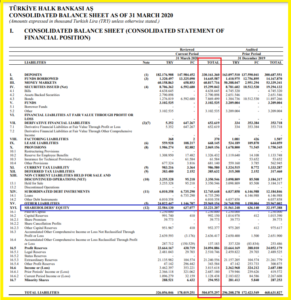All Western media always publish negative information about Turkey.
Is this justified or is it propaganda against a country that has been brilliantly successful in increasing the wealth of the nation and its people for decades while most of these Western countries are more or less suffering from minimal growth and even crises?
Inflation is high in Turkey, but rising prices encourage Turks to spend quickly the money they earn from their work and companies to take on debt to invest, which has the advantage of maintaining strong growth in the wealth produced in the nation, which benefits its people.
Inflation is considered by many economists to be a disaster, but it also has its advantages.
The standard of living of Italians increased considerably after World War II thanks to inflation, but Italy’s growth has stagnated since inflation fell to a very low level, in particular because of the deflationary monetary policy pursued in the euro zone.
High inflation of 10-20% (as in Turkey) has advantages that outweigh its disadvantages, but only when the fundamental ratios are respected.
The two main fundamental ratios are, first, the leverage of banks, which must be less than 10, and second, the ratio of the money supply M3 to current annual GDP (as a percentage), which must not exceed 80%.
This first article on Turkey deals with the issue of banks.
***
Banks are companies whose main activity is to lend the money they have, i.e. their tangible (real) equity and the money they do not have but which they borrow and which constitute liabilities for them.
The rule of good management is simple: their total liabilities must not exceed 10 times the amount of their equity.
This is the main criterion for evaluating banks: the leverage.
A careful analysis of the largest Turkish banks shows that all but two of them respect this rule of good management,
Document 1:
Amounts in billions of Turkish lira. The Core Tier 1 ratio is the inverse (in percentage) of leverage: it is the amount of equity to liabilities (multiplied by 100) which must be greater than 10% as is the case for IsBank with 11.6%.
As a reminder, assets can only be financed by equity and liabilities.
It’s simple. Everything is simple.
So, this table (document 1) clearly shows that the major Turkish banks all have leverage below (or equal to) 10 except Varif Bank and Halk Bank which have leverage of 14, which is (almost) perfect.
By way of comparison, the leverage of the big US and European banks as I calculated them using the same method for the end of the 2nd quarter of 2020 shows that only three big US banks had leverage below 10 while those of the big European banks peaked for four of them at over 50!
Document 2:
In reality, the situation of the big European banks and in particular French banks is even worse since, taking into account IFRS rules and off-balance sheet commitments that are not covered by guarantees, some have largely negative equity such as Société Générale and BNP-Paribas while Turkish banks have guarantees on the off-balance sheet that amount to double their commitments!
Document 3:
The Turkish banking system is therefore perfectly healthy, which is not the case for European banks.
As a reminder, sound money is the first pillar of Reaganomics, according to Arthur Laffer, and for money to be sound in a nation, it is necessary that banks respect the prudential rules of indebtedness, which is the case in Turkey, and which can also be seen, above all, in the structure of monetary aggregates.
When these basic conditions are respected, growth is automatically strong in Turkey.
Money circulates quickly: Turks work, earn money and spend it quickly.
Once again, everything is simple.
***
The biggest Turkish bank by total balance sheet is Ziraat Bank, which had a leverage of less than 9 until 2019 but is 10.2 at the end of 2020, maybe because of this coronavirus story.
Such a result is perfect.
Document 4:
Ziraat Bank, agricultural bank in English, was created in the 19th century in what is now Serbia, which was then part of the Ottoman Empire, to finance farmers’ investments.
***
IsBank (labor bank in English) was created by Mustafa Kemal Atatürk after the dissolution of the Ottoman Empire after the 1st World War to finance the development of modern Turkey.
Its leverage is absolutely perfect: always less than 9!
Document 5:
***
The capital of Varif Bank (heir bank in English) is held mainly by the Treasury, Turkey Wealth Fund and VakıfBank Pension Fund.
The leverage of this bank unfortunately slipped in 2020, again because of this coronavirus story!
Document 6:
***
Just under 50% of the capital of the Turkish bank Garanti BBVA is owned by the Spanish bank BBVA, Banco Bilbao Vizcaya Argentaria.
It is perfectly well managed with leverage below 8 even in 2020!
Document 7:
***
Halk Bank (people’s bank in English) is one of the few banks that financed the sales of black gold from Iran under the US embargo by buying 13 billion dollars (USD) of (real) gold on the open market…
Obviously, a multitude of lawsuits have been launched against this bank and against all those who are considered to have participated in these operations.
Under these conditions, it is understandable that this bank is in trouble which results in a leverage of 14 which is bad for a Turkish bank but still permissible in the banking world…
Document 8:
***
YapiKredi (construction loans in English) is a bank that develops its activity in loans, in pension funds and in non-life insurance.
Its leverage always around 9 is perfect.
Document 9:
***
Citigroup invested 10% in the capital of AkBank (white bank in English) in 2013 but sold its shares in 2015.
It is the best managed large Turkish bank with a leverage of 6.6 at the end of 2020!
Document 10:
***
All the data of these banks are taken from the annual audited consolidated accounts published in their financial reports but according to the accounting rules in force in Turkey: Regulation on the Procedures and Principles for Accounting Practices and Retention of Documents by Banks, “Banking Regulation and Supervision Agency” (BRSA), “Turkish Accounting Standards”, “Turkish Financial Reporting Standards”.
These Turkish accounting rules are slightly different from IFRS but the calculated leverage is not very different depending on the rules that are adopted (Turkish or IFRS) as shown by two examples among others…
For IsBank, the leverage is 9.4 under IFRS instead of 8.6 under BRSA,
Document 11:
For Varif Bank, the leverage is 14.3 under IFRS and 14.1 under BRSA,
Document 12:
The differences between the leverage under IFRS and under BRSA are therefore negligible and do not call into question the conclusions of my analysis.
Screenshot of the liabilities of the consolidated and certified annual accounts of these two banks under IFRS,
Document 13:
Document 14:
***
For the record, screenshots of the liabilities of the consolidated and certified annual accounts of the Turkish banks according to BRSA…
Document 15:
Document 16:
Document 17:
Document 18:
Document 19:
Document 20:
***
Click here to see my article in French on Turkish banks in 2020.
tor-relations/financials/annual-reports”>Click here to access the Ziraat Bank website for investors.
Click here to go to the IsBank investor relations website.
Click here to access IsBank’s 2020 Annual Report (BRSA).
Click here to access Varif Bank‘s 2020 annual report (IFRS).
Click here to access Varif Bank’s investor relations website.
Click here to access Varif Bank’s 2020 annual report (BRSA).
torrelations.com/en/financial-information/annual-reports/Annual-Reports/69/0/0″>Click here to access the Garanti BBVA website, investor relations.
torrelations.com/en/images/entegre-faaliyet-raporu-2020/pdf/garanti-bbva-integrated-annual-report-2020.pdf”>Click here to access Garanti BBVA’s 2020 annual report.
tor-relations/financial-information/financial-reports.html”>Click here to access the Halk Bank investor relations website.
tor-relations/financial-information/financial-reports/2020/1q2020conbalance.pdf”>Click here to access Halk Bank’s 2020 annual report.
torrelations.com/en/”>Click here to access YapiKredi‘s investor relations website.
torrelations.com/en/images/pdf/annual-reports/2020/ykb_2020_integrated_annual_report.pdf”>Click here to accss YapiKredi’s 2020 annual report.
torrelations.com/en/”>Click here to access AkBank‘s website, investor relations:
torrelations.com/en/images/pdf/consalidated/akbank_en_consolidated_4q20.pdf”>Click here to access AkBank’s 2020 annual report.
© Chevallier.biz




